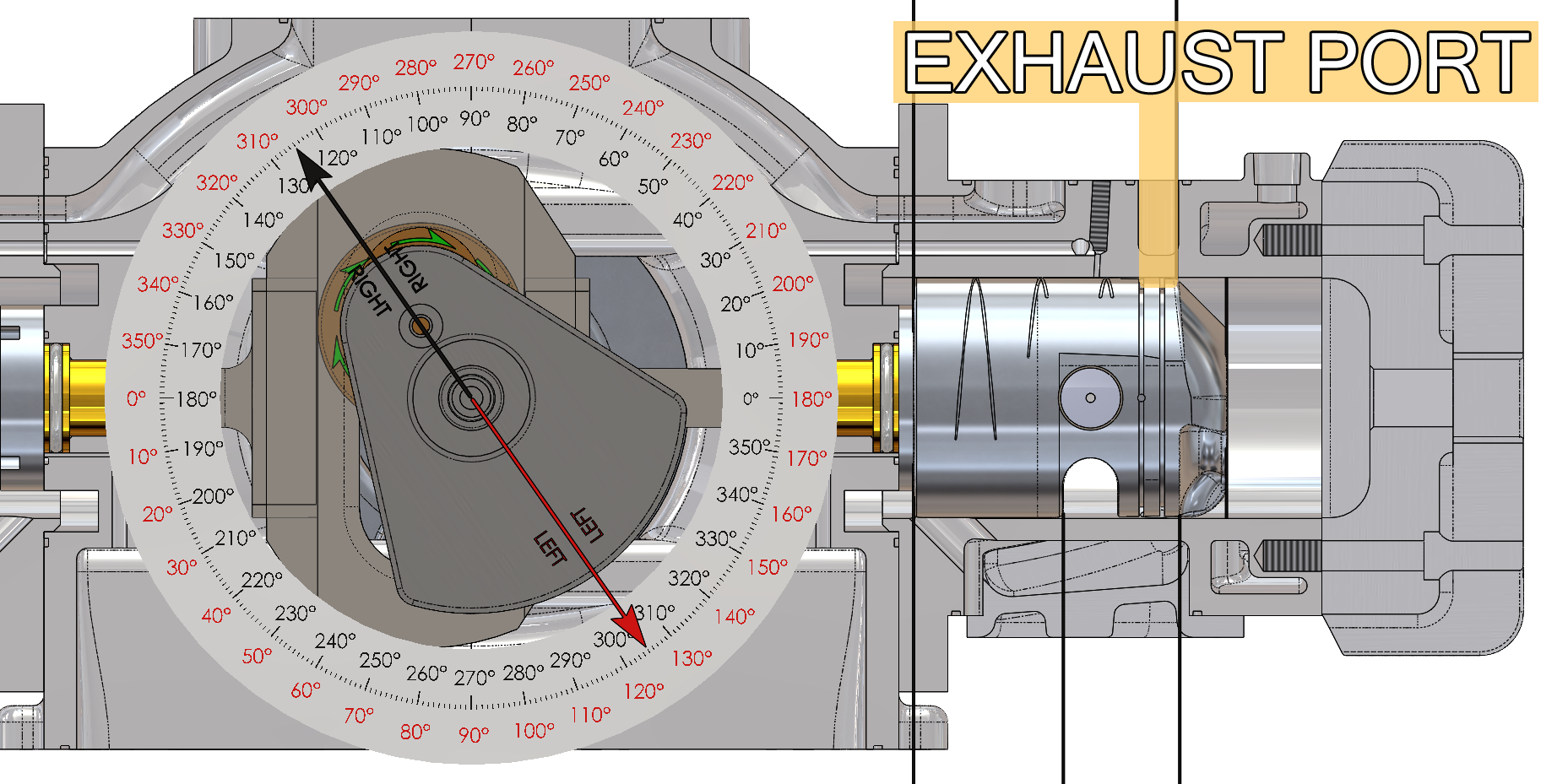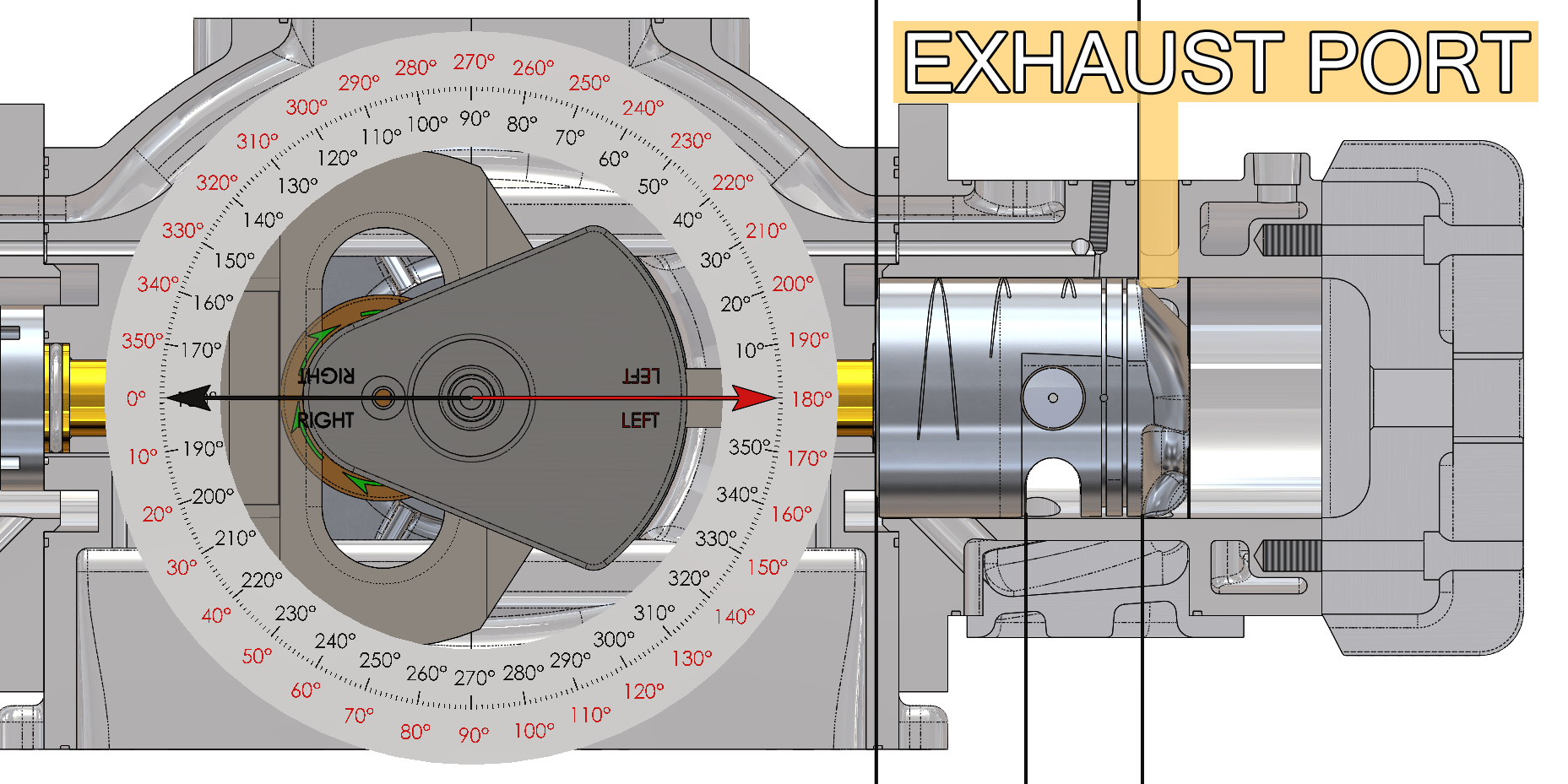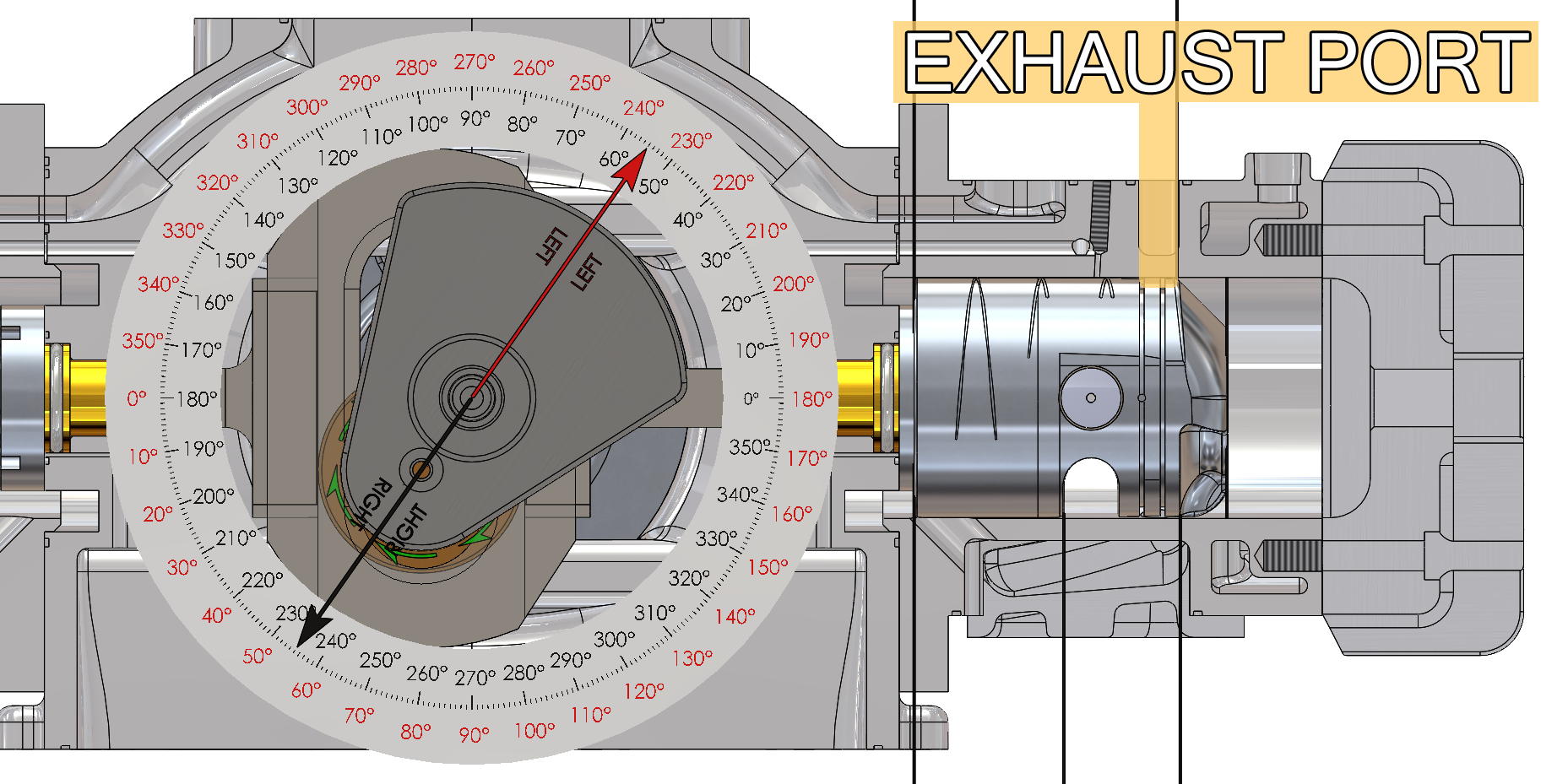Exhaust Ports
Right Cylinder
BEAU de ROCHA FUNCTIONS / ATTRIBUTES
The exhaust ports are opened by the piston head/rings for 110 degrees of crankshaft travel (from 125 degrees before bottom dead center until 235 degrees after bottom dead center – black arrow and black degree compass on the animation) and the exhaust from the combustion chamber is partially evacuated (how much exhaust is evacuated will depend on how much back pressure is needed to create the correct compression ratio for the next HCCI/detonation reaction). The turbulating fins on the piston put the fresh air/fuel mixture into cyclonic motion in the top of the combustion chamber so it does not escape through the open exhaust ports. The following function that Beau de Rocha identified in 1862 has been accomplished:
- Exhaust (partial – correct back pressure is maintained to insure the correct compression ratio for the next HCCI reaction at the correct time).
RUSSELL BOURKE’S FORMULA
- Port openings will always be computed from the degree of crankshaft travel.
- Exhaust ports open 55 degrees before bottom dead center (125 degrees – black arrow and black degree compass on the animation) and close 55 degrees after bottom dead center (235 degrees – black arrow and black degree compass on the animation).
- The exhaust ports are open for 110 degrees of crankshaft travel (from 125 degrees before bottom dead center until 235 degrees – black arrow and black degree compass on the animation).
- Exhaust port hole size is calculated from the stroke of the engine (see Table II for maximum and minimum hole sizes). There are four exhaust port holes and the total area of these four holes is used to determine the total area for the intake and lower transfer port holes.
- That portion of the piston in contact with the cylinder wall on the exhaust and intake port side must be the same diameter as the cylinder bore when the engine is hot at running temperature. This rule is extremely important to ensure there is no leakage from the intake and exhaust ports. It is also critically important for oil control as this engine will run on motor oil, excess oil will upset the air/fuel ratio and/or you will not be able to turn the engine off.
OTHER IMPORTANT INFORMATION
- Russell Bourke stated the exhaust components were carbon dioxide and water vapor. This claim was based on his research on hydrocarbon chemistry (1922 to 1932 – there were no exhaust gas analyzers). Using a Hamilton Standard Auto Sense, Model CUISNY 9000 Exhaust Gas Analyzer, no carbon monoxide was detected and only 80 parts per million (ppm) of hydrocarbons was detected.
- Russell Bourke stated you could hold matches in the exhaust gases coming directly from the engine without igniting them. Measuring the exhaust gas temperatures coming directly from the exhaust ports, the lowest temperature obtained thus far is 200 degrees F.
- In addition to controlling the compression ratio to insure an HCCI/detonation reaction at the appropriate time, restricting the exhaust also plays an important role in controlling engine speed.
- The Full Authority Digital Engine Control (FADEC) system will focus on minimizing exhaust gas emissions because the power of detonation insures there will always be an overabundance of power available.
All of the volumes shown below for the 10.842 cubic inch (177.6748 cc) model were calculated using Solid Works:
- The volume under the piston when it is at Top Dead Center (TDC) is 166.478 cubic centimeters (cc), or 10.1591 cubic inches.
- The volume under the piston when it is at Bottom Dead Center (BDC) is 88.7875 cc, or 5.4181 cubic inches.
- The volume in the combustion area when the piston is at Bottom Dead Center (BDC) is 88.8374 cc, or 5.4212 cubic inches.
- The volume in the combustion area when the piston is at Top Dead Center (TDC) is 7.2358 cc, or 0.4416 cubic inches.
The compression ratio for this model is calculated by dividing the volume at BDC by the volume at TDC (88.8374 cc/7.2358 cc =12.28:1 compression ratio).
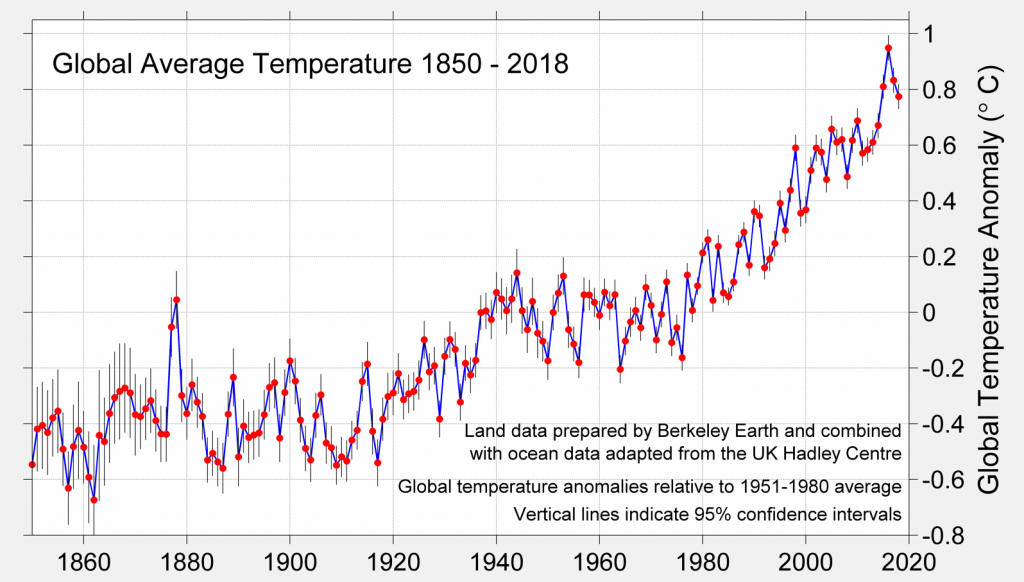
Global Warming
The chart shows the increase in global average temperature from 1850 to 2018.
Source: Berkeley Earth
Carbon Dioxide In Our Atmosphere
Read all of the scientific reports!!!!!! We are at 415 parts per million, more than anytime in the last 800,000 years. The Bourke Engine using fuel from algae for all transportation and distributive power generation will reduce our carbon footprint for these activities by AT LEAST 85%.
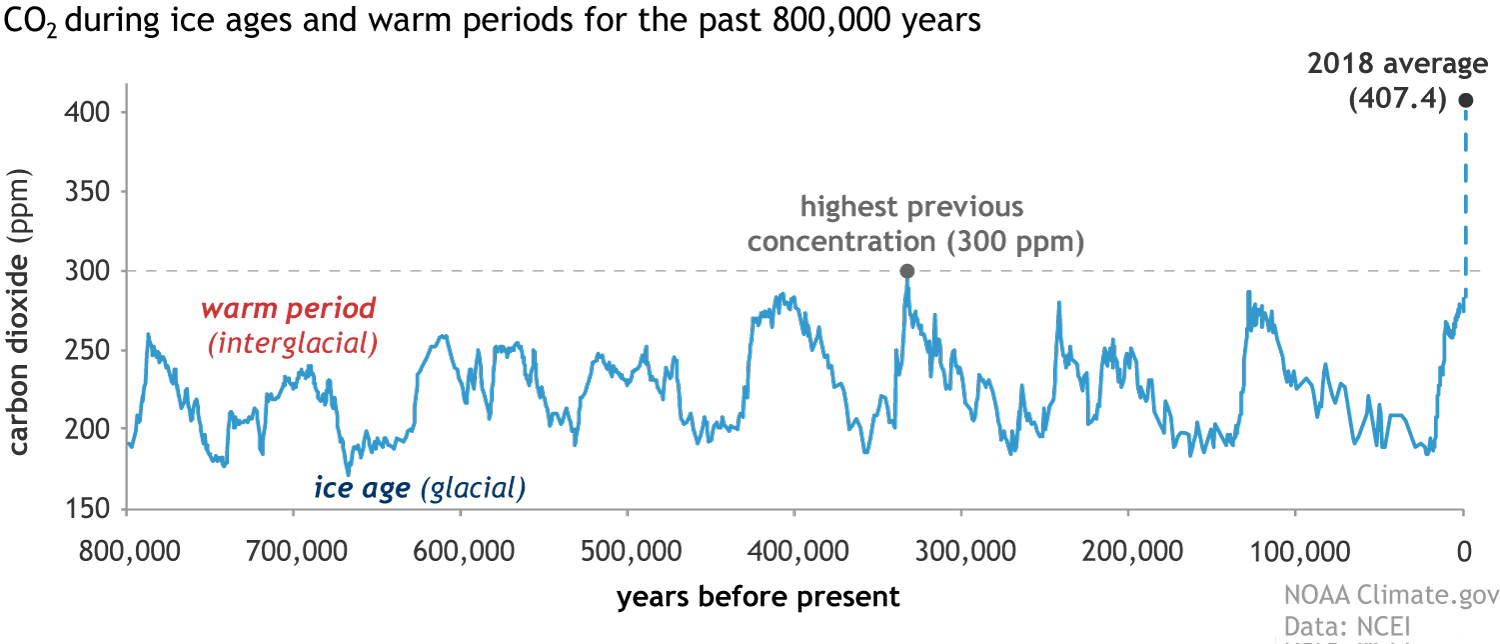

WAKE UP WORLD, WE ARE KILLING OUR PLANET!!!!
2019 – Was the Second Hottest Year on Record!!!!
Global Ocean Acidification
As our oceans absorb excess carbon dioxide, the carbon dioxide reacts with the sea water forming carbonic acid which is changing the pH of our oceans making them more acidic. Research is ongoing as to how the increased acidic level of our oceans is affecting corals and marine life.
Source: IPCC 2007
©2019 Copyright Bourke Engine Project, LLC
All Rights Reserved. All of the information contained within this website can be used, with permission, by any other website providing that the requesting party agrees to the terms and conditions as described in the PERMISSION FORM.
© Copyright 2019-2023 Designed by Lynn

